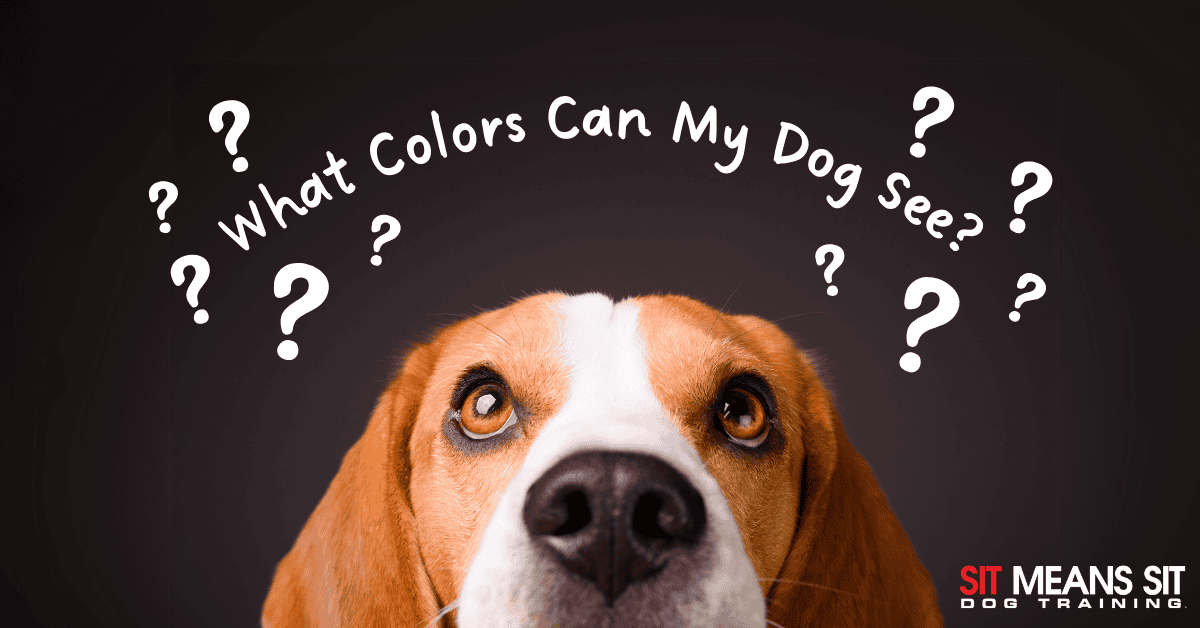Have you ever wondered what the world looks like to your dog? It’s a common question among pet owners, but the answer may not be exactly what you expect. Having a better understanding of how your dog experiences the world can strengthen your bond with them by helping you see the world through their eyes (somewhat). Let’s break down how dogs see the world and what colors they can perceive.
What is Color Blindness?
To understand your dog’s visual world, it’s helpful to first understand what color blindness means. Contrary to popular belief, color blindness doesn’t mean seeing the world in black and white. Instead, it refers to the inability to distinguish certain colors. In some cases, people or animals with color blindness cannot see certain colors at all.
So, what causes color blindness? This condition occurs due to an abnormality in the color-sensing receptors in the eye. The eye is made up of specialized cells called rods and cones, each of which plays a distinct role in vision. While humans have three different types of cones in their eyes, dogs only have two. As a result, human vision can typically identify three color combinations, while dogs are limited to only two. Because of this, canine vision is called dichromatic, which means “two-colored.”
What Does a Dog’s Vision Look Like?
So, what do our furry friends see? Dogs’ eyes have lower visual sharpness than humans, meaning their line of sight is likely more blurry. Many canines are also near-sighted, so it’s easier for them to see objects clearly when they’re close to them. Since objects and people might appear a bit fuzzy, their sharp sense of smell and hearing often comes in handy.
Additionally, a dog’s world is much less colorful than what we are used to seeing. However, don’t be fooled—there are certain aspects where canines’ vision is actually better than ours! For example, dogs’ eyes are superior at detecting motion and seeing clearly in dim lighting. In fact, dogs are much better at seeing in the dark than humans. And besides, having trouble seeing certain colors isn’t an issue in the dark since shades of gray take over.
How Do We Study Canine Vision?
You might be wondering, how do we know what dogs can and can’t see? After all, it’s not like your furry friend can share their preference for specific glasses lenses at an eye doctor appointment. Well, certain studies conducted on this topic have looked at the structure and function of canines’ eyes. This research was used to see how dogs’ eyes react to various wavelengths of light and which cones are present, which is how we have an idea of which colors they can see.
Additionally, scientists have also conducted behavioral studies to dive deeper into how dogs see color and test their microscopic observations. One type of study involved training canines to respond to specific color cues to food rewards. Other research analyzed how dogs’ bodies, eyes, and heads respond to the movement of certain colored objects. Scientists have also looked at how dogs choose rewards and found that canines consider the color of an object more than the brightness of an object. Over time, studies have obtained consistent results that have taught us what we know today about canines’ color vision.
What Colors Can Dogs See?
Although canines aren’t fully colorblind, they can’t see nearly as many colors as their human owners. Research shows that canines are most similar to humans with red-green color blindness, which means that they mainly see yellow and blue. Blue, blue-green, and violet likely all appear as varying shades of blue to your furry friend. Combinations of red, orange, yellow, and green colors likely appear as variations of yellow. Since orange is a combination of red and yellow, it probably appears as a deeper shade of yellow than solely yellow objects.
Red and green are the main colors that dogs struggle to see. A common misconception is that canines can’t distinguish between these colors, but that isn’t true. Instead, red and green objects appear as shades of the same color (compared to distinct colors). Red-colored objects appear on the yellow spectrum, which means that red objects will appear as a dark to brownish yellow, depending on their shade. Green objects appear as shades of grey, with color returning the more blue is mixed in with green.
Dogs might not see the world in the same vibrant colors we do, but their color vision is still more than enough to help them navigate their surroundings. Plus, they make up for it with their other incredible senses, like their impressive sense of smell and hearing. They’ve got everything they need to navigate their world in their own special way!

